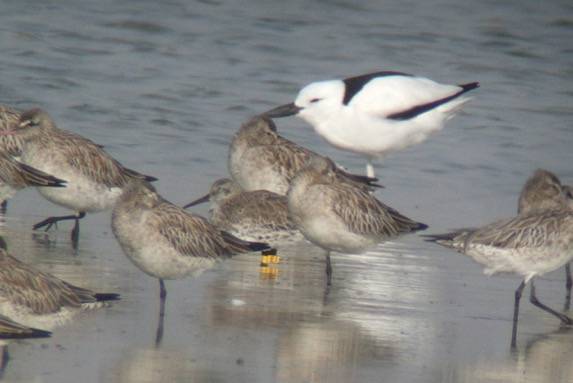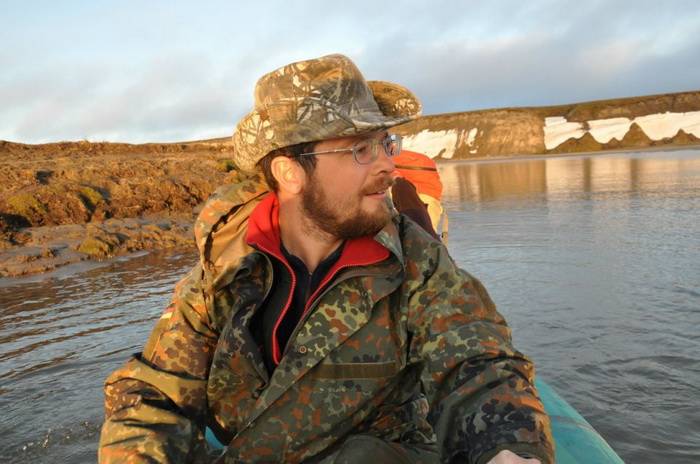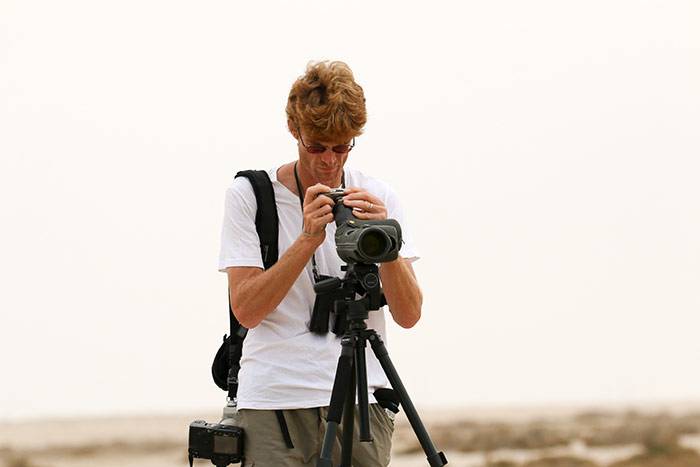Knot ‘EI’ again!

Dmitry Dorofeev and his team have been counting and ringing shorebirds in the estuary of the Khairusova-Belogolovaya River, Kamchatka, Russia for a number of years. In 2016, they marked 320 Great Knots with engraved yellow flags, and have had subsequent re-sightings of birds in Japan, South Korea and Australia. But probably the most unexpected re-sighting was that of a Great Knot in the United Arab Emirates earlier this year. On 20 January 2017, some 8300km from its Kamchatka ringing location, Oscar Campbell, located and photographed Great Knot ‘EI.’ You can read previous blogs about the sighting: From Russia with Love (or at least a ring): Kamchatka Great Knot reaches the Arabian Gulf! and EI in the UAE: a story of one Great Knot and there is an accompanying video story filmed by one of the project funders, the Mohammed bin Zayed Species Conservation Fund (MBZ).
Had the story ended there, it would have been interesting enough, but Great Knot ‘EI’ seems to like the spotlight! This summer Dmitry and his colleagues were again surveying and catching shorebirds in Kamchatka, when on the penultimate day of the field season they encountered an old friend. Great Knot ‘EI’ first ringed in Kamchatka in July 2016, seen in January 2017 in Dubai, was now back again in the Khairusova-Belogolovaya Estuary. This is quite a late sighting and the team are hoping that this means ‘EI’ had a successful breeding season! A full account of the Kamchatka field season can be found on the Team Piersma website
So what next? Every sighting of marked individuals helps scientists understand more about migration and what needs to be done to ensure a future for threatened shorebirds. The Great Knot Calidris tenuirostris has recently been up-listed to Endangered according to the IUCN red-list of threatened species based on a recent population decline of about 78% in the Australasian wintering population. Small numbers do winter in the Arabian Peninsula and the sighting of ‘EI’ has established for the first time a migratory link between the Russian Far East and the Middle East.
It’ll be fascinating to see if ‘EI’ will be seen again this winter visiting his friends in the UAE, over to you Oscar Campbell………
Further reading
Campbell, O & Hellyer, P (2015). A review of the status of Great Knot in the United Arab Emirates with, with comments on observations from a newly discovered wintering site. Tribulus 23: 107–110. Accessible at: http://www.uaebirding.com/Resources/Great_Knot_in_the_UAE.pdf
Dorofeev, DS & Kazansky, FV (2013). Post-breeding stopover sites of waders in the estuaries of the Khairusovo, Belogolovaya and Moroshechnaya rivers, western Kamchatka Peninsula, Russia, 2010–2012. Wader Study Group Bull. 120(2): 119–123.
Accessible at: http://www.waderstudygroup.org/article/1802/

Header photo ©Oscar Campbell
Dmitry Dorofeev is a researcher in All-Russian Research Institute for Environmental Protection and PhD student in Moscow State University. Nowadays, focusing on waders and geese studies.

Oscar Campbell has been resident in the UAE since 2006 and watching birds for over 20 years prior to his migration there. He is chairman of the Emirates Bird Records Committee and, when not travelling in search of birds, teaches Chemistry in a school in Abu Dhabi.
